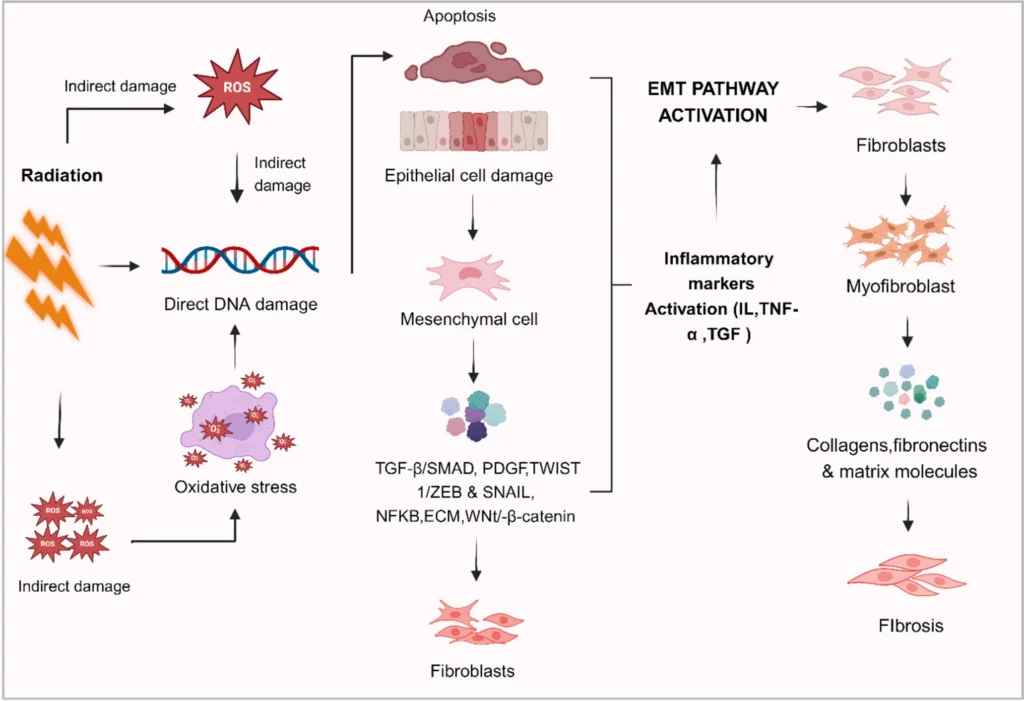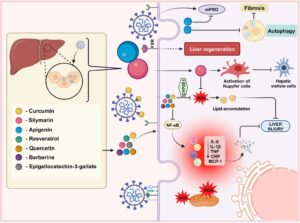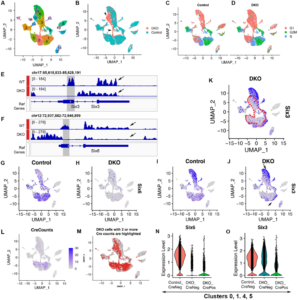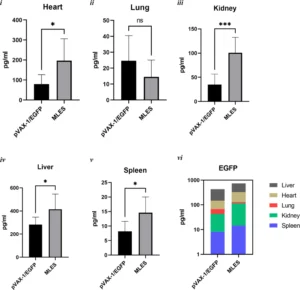Radiation therapy-induced normal tissue damage: involvement of EMT pathways and role of FLASH-RT in reducing toxicities.

Dhasarathdev Srinivasan 1, Rajasekaran Subbarayan 1,5*, Madhan Krishnan2, Ranjith Balakrishna 1, Pooja Adtani 3, Rupendra Shrestha 4*, Ankush Chauhan 5, Shyamaladevi Babu 2, Arunkumar Radhakrishnan 6
- Centre for Advanced Biotherapeutics and Regenerative Medicine, Faculty of Research, Chettinad Hospital and Research Institute, Chettinad Academy of Research and Education, Kelambakkam 603103, Tamil Nadu, India
- Faculty of Research, Chettinad Hospital and Research Institute, Chettinad Academy of Research and Education, Kelambakkam 603103, Tamil Nadu, India
- Department of Basic Medical and Dental Sciences, Gulf Medical University, Ajman, United Arab Emirates
- Department of Natural and Applied Sciences, Nexus Institute of Research and Innovation (NIRI), Lalitpur, Nepal
- Centre for Herbal Pharmacology and Environmental Sustainability, Chettinad Hospital and Research Institute, Chettinad Academy of Research and Education, Kelambakkam 603103, Tamil Nadu, India
- Department of Pharmacology, Chettinad Hospital and Research Institute, Chettinad Academy of Research and Education, Kelambakkam, India
Publication: Radiation and Environmental Biophysics. 2025;64(1):1-16. doi: 10.1007/s00411-024-01102-2
Abstract – Radiation therapy (RT) is fundamental to the fight against cancer because of its exceptional ability to target and destroy cancer cells. However, conventional radiation therapy can significantly affect the adjacent normal tissues, leading to fibrosis, inflammation, and decreased organ function. This tissue damage not only reduces the quality of life but also prevents the total elimination of cancer. The transformation of epithelial cells into mesenchymal-like cells, termed epithelial-mesenchymal transition (EMT), is essential for processes such as fibrosis, embryogenesis, and wound healing. Conventional radiation therapy increases the asymmetric activation of fibrotic and inflammatory pathways, and the resulting chronic fibrotic changes and organ dysfunction are linked to radiation-induced epithelial-mesenchymal transition. Recent advances in radiation therapy, namely flash radiation therapy (FLASH-RT), have the potential to widen the therapeutic index. Radiation delivered by FLASH-RT at very high dose rates (exceeding 40 Gy/s) can protect normal tissue from radiation-induced damage, a phenomenon referred to as the “FLASH effect”. Preclinical studies have demonstrated that FLASH-RT successfully inhibits processes associated with fibrosis and epithelial-mesenchymal transition, mitigates damage to normal tissue, and enhances regeneration. Three distinct types of EMT have been identified: type-1, associated with embryogenesis; Type-2, associated with injury potential; and type-3, related with cancer spread. The regulation of EMT via pathways, including TGF-β/SMAD, WNT/β-catenin, and NF-κB, is essential for radiation-induced tissue remodelling. This study examined radiation-induced EMT, TGF-β activity, multiple signalling pathways in fibrosis, and the potential of FLASH-RT to reduce tissue damage. FLASH-RT is a novel approach to treat chronic tissue injury and fibrosis post-irradiation by maintaining epithelial properties and regulating mesenchymal markers including vimentin and N-cadherin. Understanding these pathways will facilitate the development of future therapies that can alleviate fibrosis, improve the efficacy of cancer therapy, and improve the quality of life of patients.
Cite: Srinivasan D, Subbarayan R, Krishnan M, Balakrishna R, Adtani P, Shrestha R, Chauhan A, Babu S, Radhakrishnan A. Radiation therapy-induced normal tissue damage: involvement of EMT pathways and role of FLASH-RT in reducing toxicities. Radiat Environ Biophys. 2025;64(1):1-16. PMID: 39760753.





